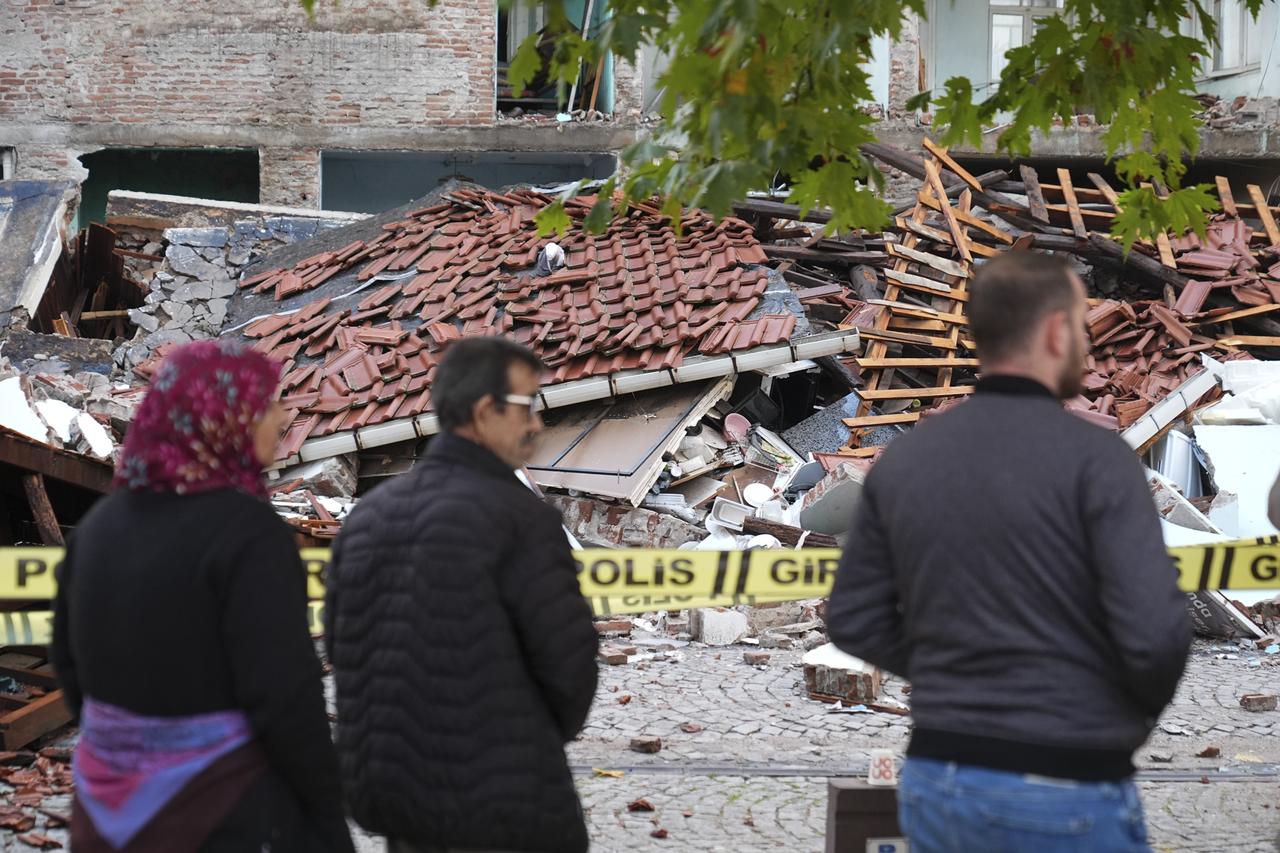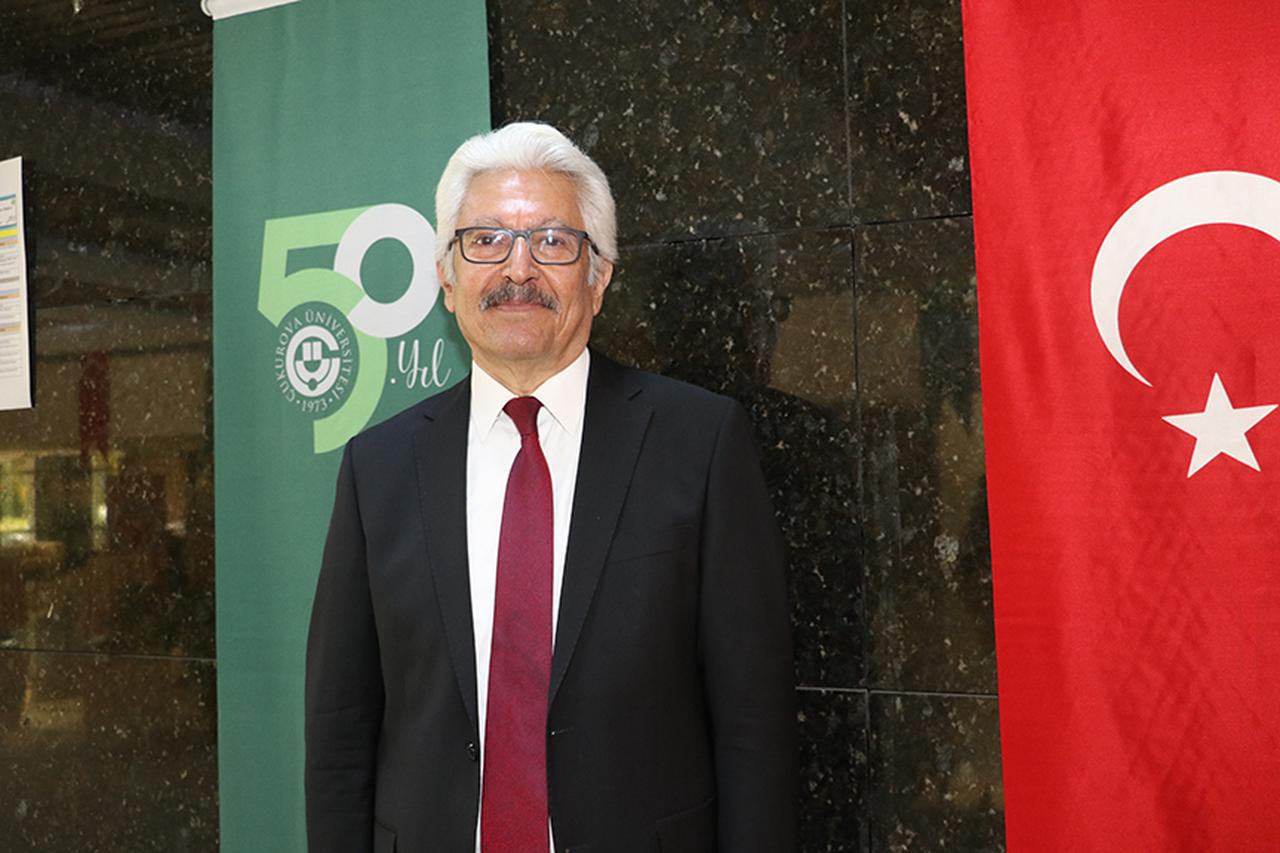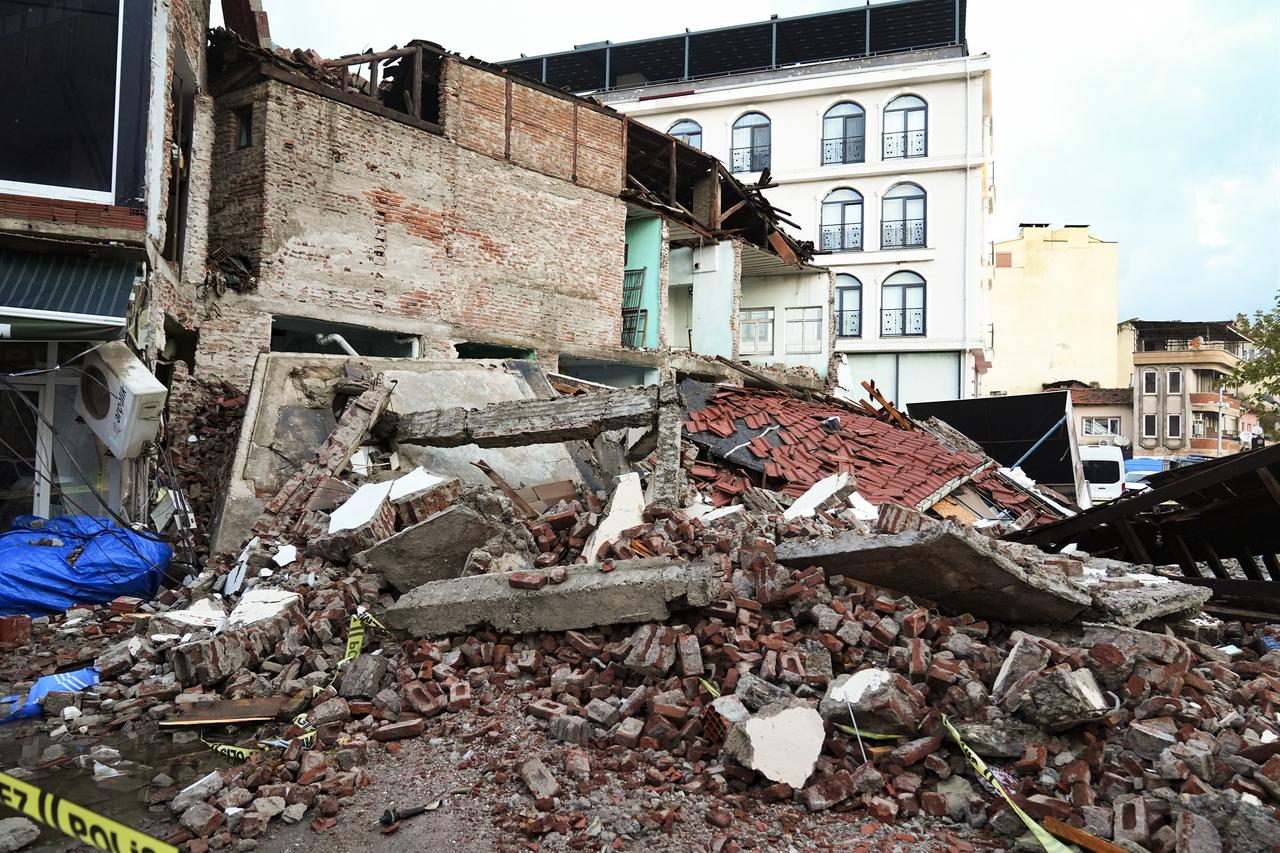
Residents of Sindirgi, Balikesir, were shaken again early Monday as a series of earthquakes struck the region, according to the Disaster and Emergency Management Authority (AFAD).
The first tremor hit at 01:06 local time with a magnitude of 4.5 at a depth of 11 kilometers. A second 4.5-magnitude quake followed at 05:48, this time at 13.25 kilometers deep. The region continued to experience a flurry of aftershocks: 3.9 at 05:50, 3.6 at 05:52, 4.4 at 09:41, and 3.7 at 10:02.
Experts describe the activity as an “earthquake storm,” an intense period of repeated seismic events.
Seismologist Prof. Dr. Suleyman Pampal explains to Turkish news channel CNN Turk that daily minor quakes are part of a larger tectonic process, with magnitudes mostly between 4 and 5.
“These are not isolated events; the region is experiencing sustained seismic activity along the Sindirgi segment of the Simav Fault Zone,” he said.

The Sindirgi–Simav region in Türkiye's southwest is dominated by normal faults, in contrast to the Marmara region, where transform faults are prevalent. Normal faults form under extensional stress, causing the earth’s crust to pull apart, and in this area, magma rising from below contributes to repeated small and medium-sized quakes.
Prof. Pampal explained that the movement of magma and the associated stress transfer along nearby fault segments trigger repeated seismic activity. “The energy from one fault can transfer to another,” he said. “Because some nearby faults have not yet broken, the stress can accumulate, occasionally producing stronger tremors.”
The underlying tectonic setting is linked to the collision and subduction zones between the African and Eurasian plates, particularly the Crete–Rhodes fault system, which has historically produced large earthquakes of magnitude 7 to 8. While Sindirgi’s current quakes are smaller, they are part of a wider, dynamic seismic environment.

Earthquake storms typically last for several months, gradually decreasing in intensity. In Sindirgi, Prof. Pampal expects the current activity to continue for a few more months but not for an extended period of a year or more.
Despite the moderate magnitudes, Prof. Pampal warned that residents should not underestimate the situation. Nearby fault segments could produce larger quakes, potentially reaching magnitude 6, if accumulated stress is released suddenly.